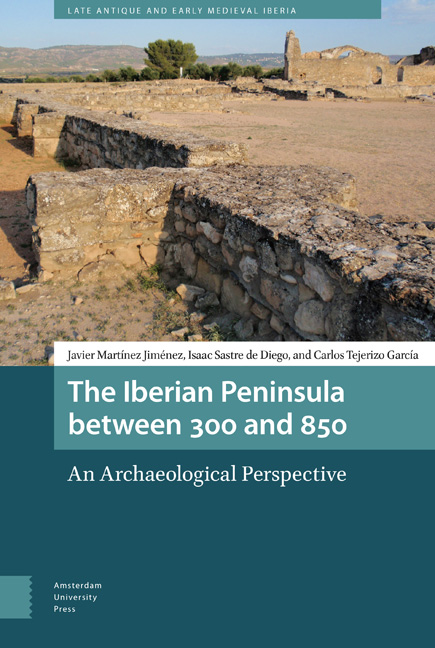Book contents
- Frontmatter
- Contents
- List of Figures
- Acknowledgements
- Preliminary notes
- Preface
- Introduction: An archaeological perspective on the Iberian peninsula between Rome and the Middle Ages
- Part 1 The Late Roman period
- Part 2 The post-Roman period
- Part 3 The Early Middle Ages
- Appendix 1 Site reference table
- Appendix 2 Maps
- Appendix 3 Lists of rulers
- Abbreviations
- Bibliography
- Index
1 - The settings of late Roman Hispania
Published online by Cambridge University Press: 10 December 2020
- Frontmatter
- Contents
- List of Figures
- Acknowledgements
- Preliminary notes
- Preface
- Introduction: An archaeological perspective on the Iberian peninsula between Rome and the Middle Ages
- Part 1 The Late Roman period
- Part 2 The post-Roman period
- Part 3 The Early Middle Ages
- Appendix 1 Site reference table
- Appendix 2 Maps
- Appendix 3 Lists of rulers
- Abbreviations
- Bibliography
- Index
Summary
The differences between the early and the late Roman Empires are both formal and essential. Following Peter Brown's seminal works (especially Brown 1976), Late Antiquity can be seen as a completely different time period to the Greco-Roman, Classical Antiquity. As outlined before, the objective of this book is to focus on the responses in Late Antique period to the transformations of the Roman world which materialized from the fourth century onwards, and on how these evolved throughout the fifth to eighth centuries, and subsequently how by the ninth century they were later substituted by Medieval elements. In order to do this, it is necessary to understand the fundamental changes and their causes which characterized the period of Late Antiquity. These will be outlined in this chapter, although the consequences of these changes will be further explored in later ones.
Roman Spain on the eve of late Antiquity
By the year 300, Iberia had been part of Rome for over five centuries, since the first arrival of the Romans during the Second Punic War. The slow conquest of the peninsula was paralleled to a slow but steady integration into the Roman system in all fields: from the economy to politics, culture and society. Iberia changed from a distant territory from which to extract raw materials into a heavily urbanized province – especially the Mediterranean coastal regions and Baetica, where the ‘Romanization’ (understanding this term in its broadest sense of ‘integration in the Roman culture and its administration’) was perhaps comparable to that of Southern Gaul and North Africa (at least for some parts). Furthermore, Hispania was the first place outside Italy where the Romans set up a colony, Italica, and the Hispanic landed aristocracy was important enough to provide Rome with its first non-Italian emperor: Trajan.
From an archaeological point of view, this integration is first and foremost seen in the degree of urbanization. By the eve of Late Antiquity, towns in Hispania had been through at least three centuries of Roman monumentalization. The urban network of Roman Hispania was based on three types of settlement: pre-Roman settlements, Republican foundations and Augustan foundations. Many of the large monumental cities correspond to this last group, such as Mérida (Augusta Emerita), Zaragoza (Caesaraugusta), and Astorga (Asturica Augusta).
- Type
- Chapter
- Information
- The Iberian Peninsula between 300 and 850An Archaeological Perspective, pp. 47 - 66Publisher: Amsterdam University PressPrint publication year: 2018



